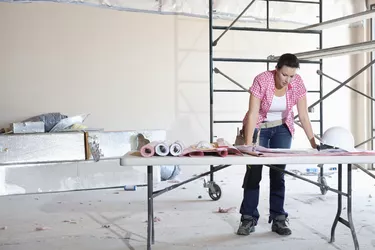
Homeowners should know what they can and cannot do on their property. One of the most regulated areas of home ownership involves building and remodeling. These regulations restrict the areas where a homeowner can build on her property. Building codes and local ordinances establish property setbacks that create restricted areas where homeowners cannot build.
Property Setbacks
Video of the Day
A property setback is a restriction that prevents a homeowner from building a structure too close to his neighbor's property. Setbacks establish a distance from a property boundary within which building is prohibited. Property setbacks can sometimes also prevent a homeowner from extending a dwelling or structure all the way to his property line.
Video of the Day
Property Setback Variances
If a homeowner believes a setback unfairly restricts her property rights she can petition her local government for a variance in the code. A setback variance allows a property owner to build within her property's setback zone. Variances are hard to obtain, however. Most zoning boards and other property oversight agencies grant setback variances only in cases of extreme hardship.
Zoning Boards and Setbacks
Local agencies regularly make decisions regarding property setbacks. For example, municipal zoning boards frequently establish and oversee setbacks for properties in their jurisdiction. When local zoning and other agencies meet they also frequently hear petitions or demands for action to resolve property owners' setback disputes. Legal remedies, including injunctions, lawsuits to force changes to setbacks, are also available to property owners impacted by such setbacks.
Setback Violation Penalties
Penalties for ignoring property setbacks can be severe. The local government can impose fines and require an owner or developer who builds in a setback to remove the encroaching structure. If the local government does not order removal, the neighbor whose property setback was encroached upon can sue to have the structure removed.